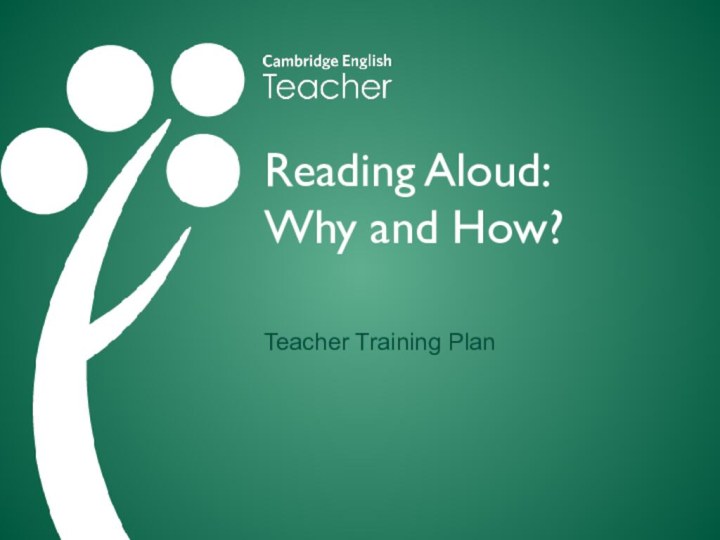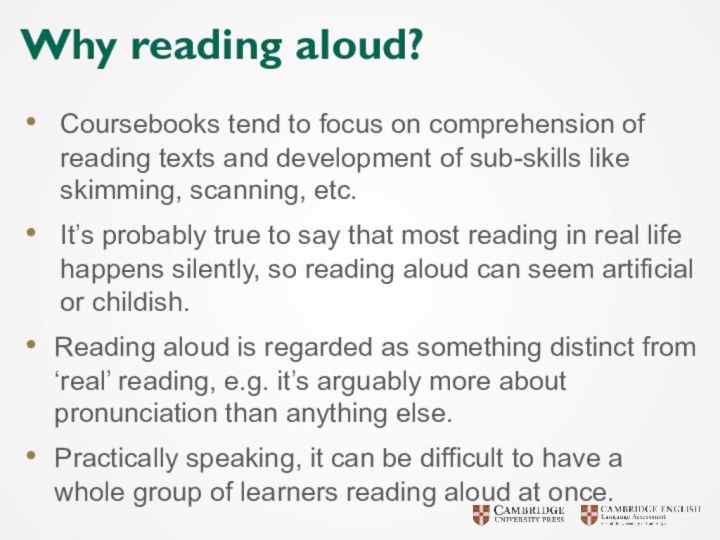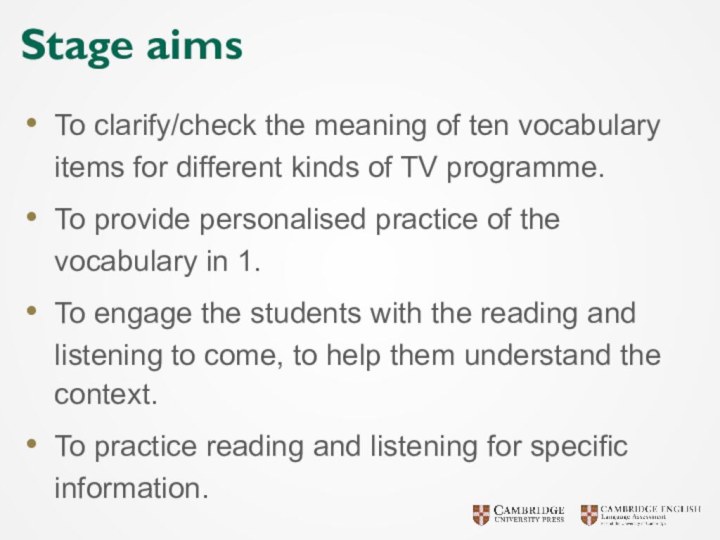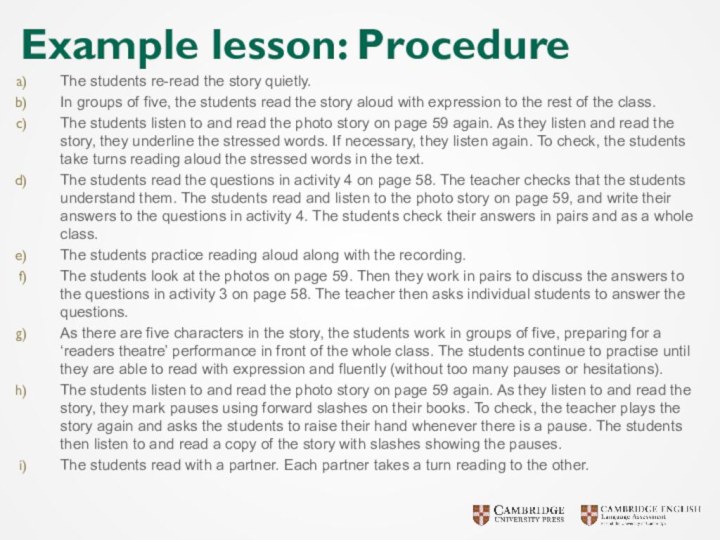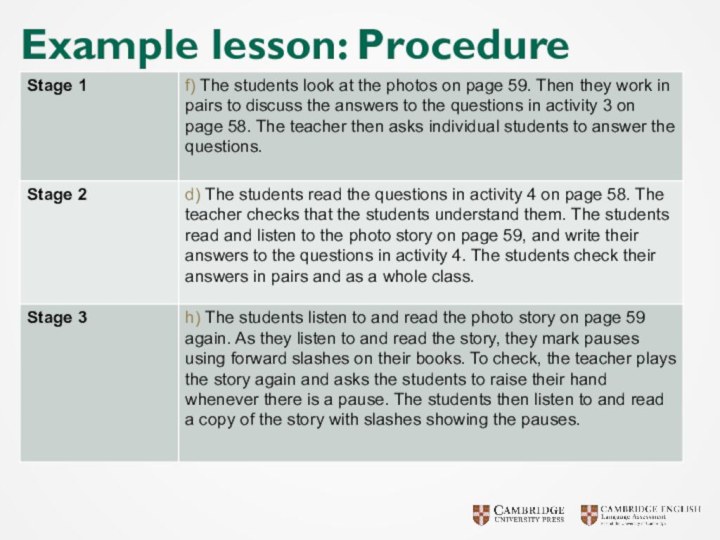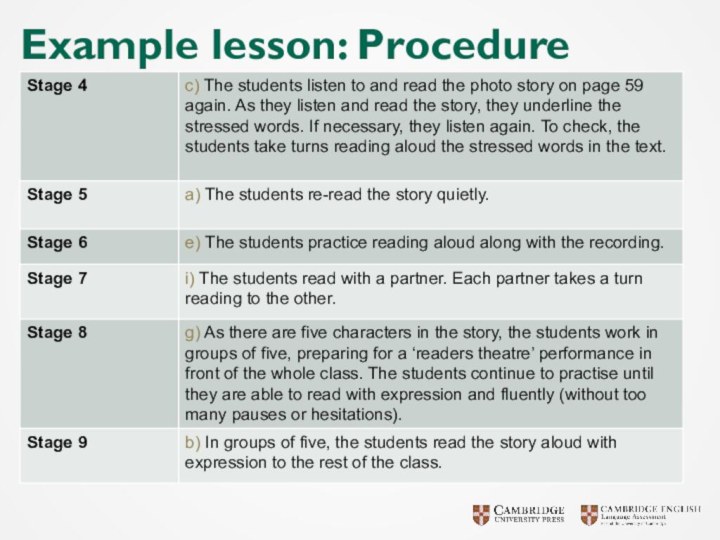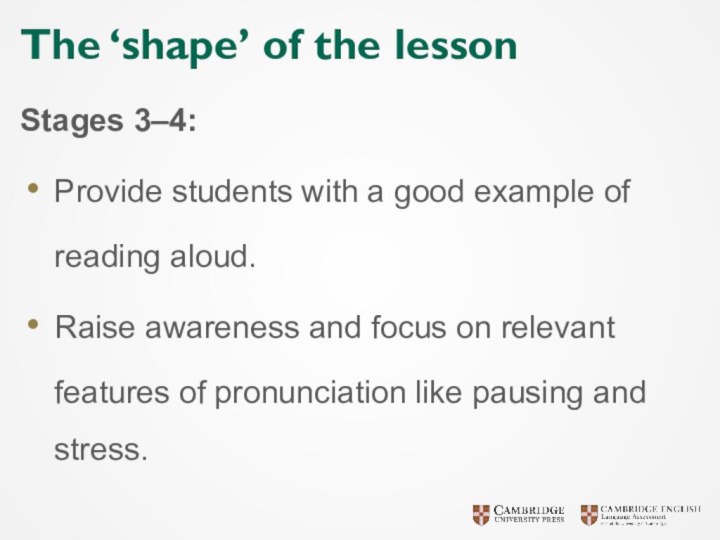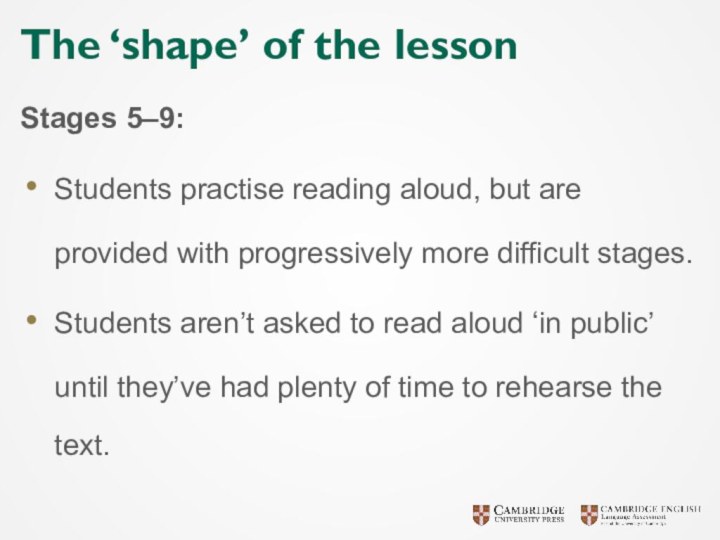with a focus on reading aloud. Why might this
be?Do you include much work on reading aloud in your own teaching? Why? / Why not?
In what ways could work on reading aloud be of benefit to learners?
FindSlide.org - это сайт презентаций, докладов, шаблонов в формате PowerPoint.
Email: Нажмите что бы посмотреть
